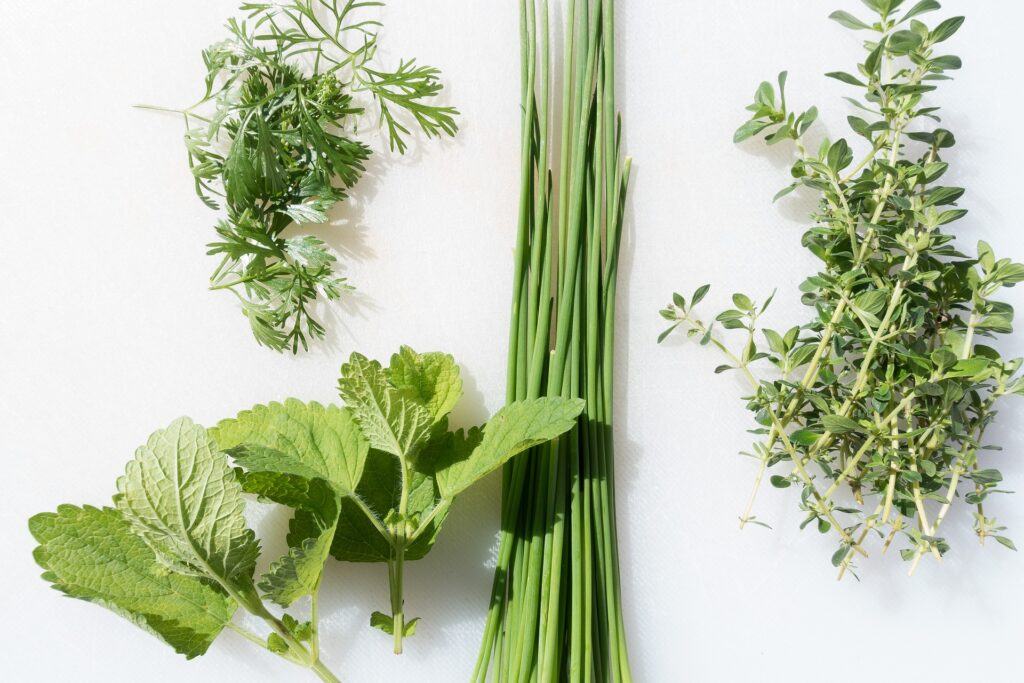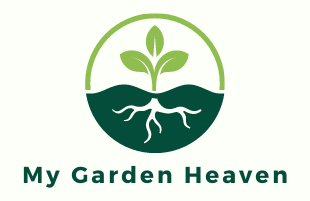If you find yourself regularly purchasing herbs from the supermarket and want to know how to grow your own, this post will help you discover the 10 easiest herbs to grow at home, either indoors or in the garden.
Growing herbs can save you money, reduce waste (how many times have you thrown away that last bit of basil or parsley?) and the plants themselves have wonderful health benefits and will retain much more of their nutritional value when you eat them straight from your own supply.
Many have a wonderful fragrance and can also help keep insects away.
Let’s have a look at the 10 easiest herbs to grow, including some more unusual options if you are feeling adventurous.
2. Thyme
3. Basil and Thai Basil
4. Chives
5. Mint
6. Rosemary
7. Coriander/Cilantro
8. Oregano
9. Sage
10. Lemongrass
Parsley
Parsley has a lovely fresh flavour, and it is known to help digestion and help with bloating.
There are two main varieties: curly and flat leaf, both are rich in vitamin A, C and K.
You can sow parsley seeds either directly into the ground or in pots in spring and early summer, and harvest in the summer or early autumn.
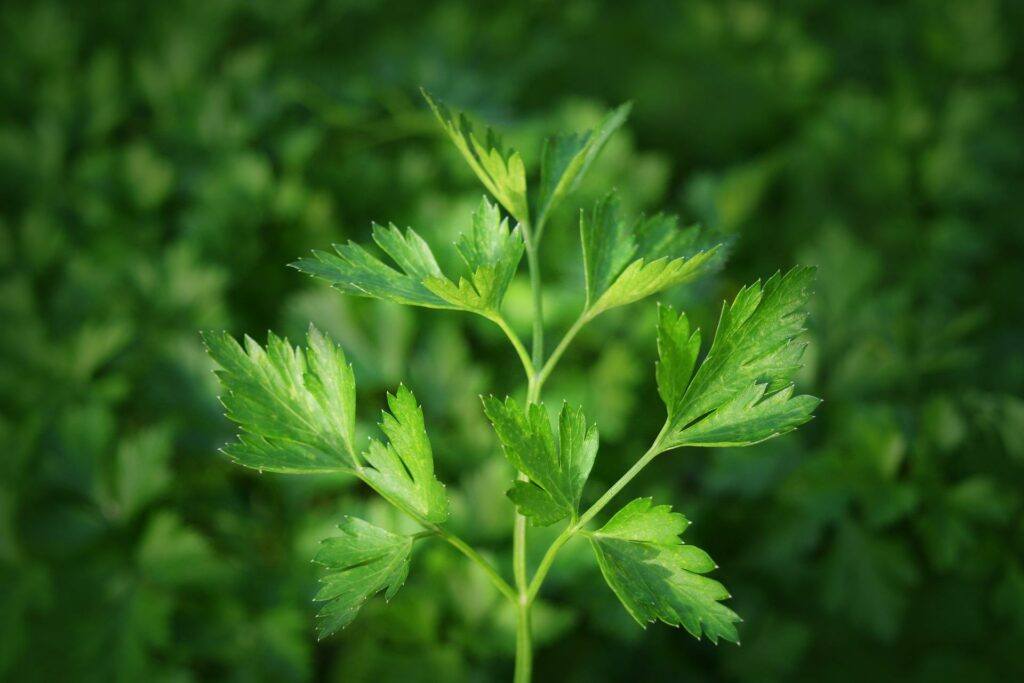
The seeds do take a while to germinate – up to six weeks is normal.
Once the seedlings have grown their second set of leaves you can thin them out.
Keep them about 15-20cm apart and keep the soil moist but not too wet, you can also feed occasionally with a liquid fertiliser if your soil is poor.
Thyme
Thyme is a great one for dryer climates and poorer soil conditions, and is known as a Mediterranean herb.
There are many varieties with different flavours, and even the flowers are edible.
It makes a great ground cover plant and is suitable for gravel gardens, and produces a wonderful savoury aroma when handled.

Generally seeds can be a bit difficult to establish so I would recommend purchasing a small plant from a nursery or supermarket.
Once they are in the ground they are very low maintenance and can tolerate drought very well, you only really need to water if in pots and even then very sparingly.
They can have a tendency to go a bit woody if the plant is left to it’s own devices so to combat this make sure to trim back after flowering, you can use the trimmings fresh for cooking or even dry them out and store.
Thyme is high in vitamin C and also thought of as having anti-fungal and anti-bacterial properties.
Basil and Thai Basil
I have included Thai basil here for those that would like to try something a little different.
The taste is similar to normal Basil but the leaves have a purple tint, are slightly longer and are a little more robust so perfect for cooking in curries as they do not wilt as quickly.

Both variations do well grown in pots and can be a little delicate, so require a sheltered spot out of the wind.
Neither will tolerate frost and can be prone to mildew so try not to splash the leaves when watering.
If you can bear this in mind Basil can be very easy and fast to grow, it does require more maintenance than Thyme for example – but the taste in pastas, salads and curries is so good it is worth persevering!
Basil is also said to keep insects away. Pick the leaves individually and often as this will encourage even regrowth.
Chives
Chives are ridiculously easy to grow.
I have some in pots outside that I have had for years that just come back every year with hardly intervention from me at all.
I trim them in spring as the leaves can become a bit long and floppy otherwise, and this seems to promote even growth and good flower production.
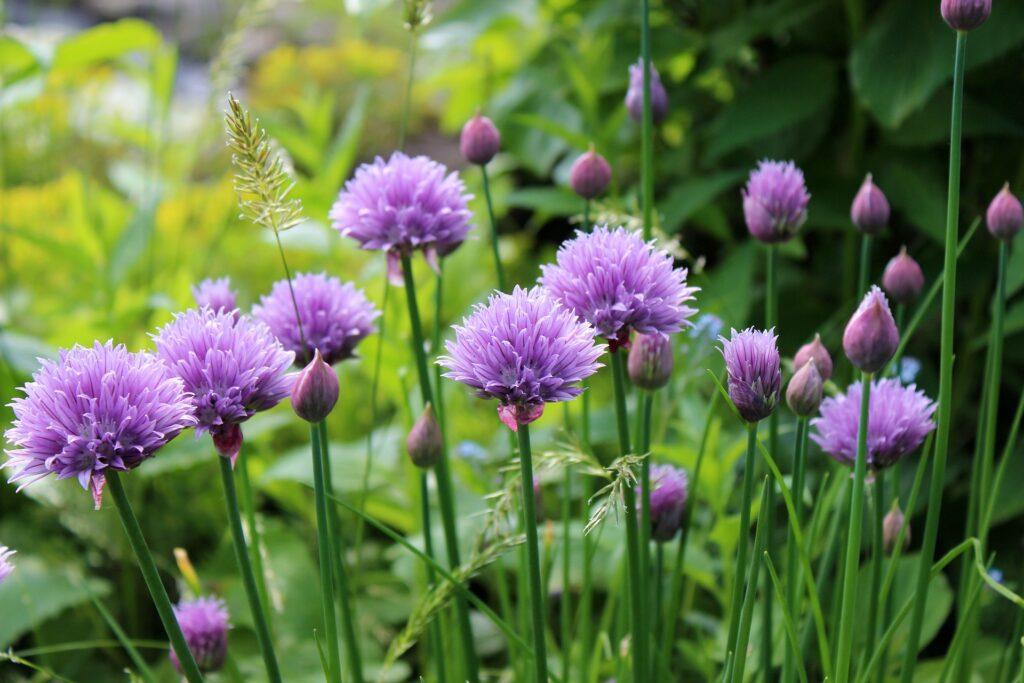
It is good to split them every few years (more free plants!) and pot them on again or plant in borders.
Bees and other pollinators love their purple flowers, and even after these have dried out they still look attractive as spherical seed heads.
They like well draining soil in full sun or partial shade.
To harvest just cut the leaves with scissors at the base.
You can eat the flowers also but not the stems.
Mint
Mint is another herb that will grow very easily once established, in fact you have to watch that it doesn’t take over your border and get out of control.
It can be better therefore to grow in pots as the roots can be extensive and will travel underground.
Mint will grow in most conditions but prefers sun to partial shade and moist but well draining soils.
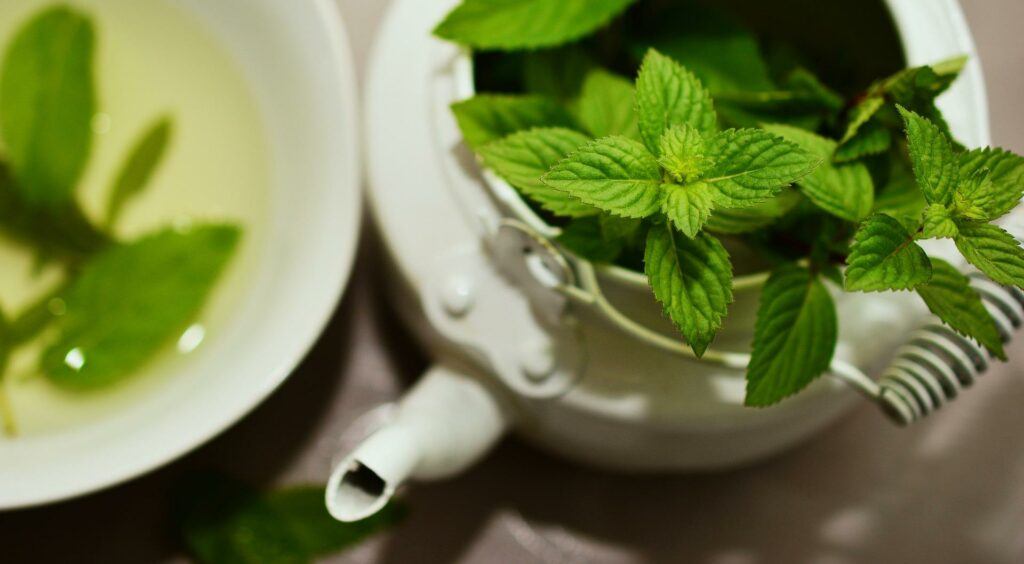
The leaves are lovely cooked with lamb, or used fresh in salads and raitas (not forgetting it’s use in cocktails such as Mojitos and Pimms!).
Mint can also be steeped in hot water for a soothing tea with stomach settling properties.
Different types such as Lemon Mint and many other varieties have a wide range of fresh aromatic flavours.
Rosemary
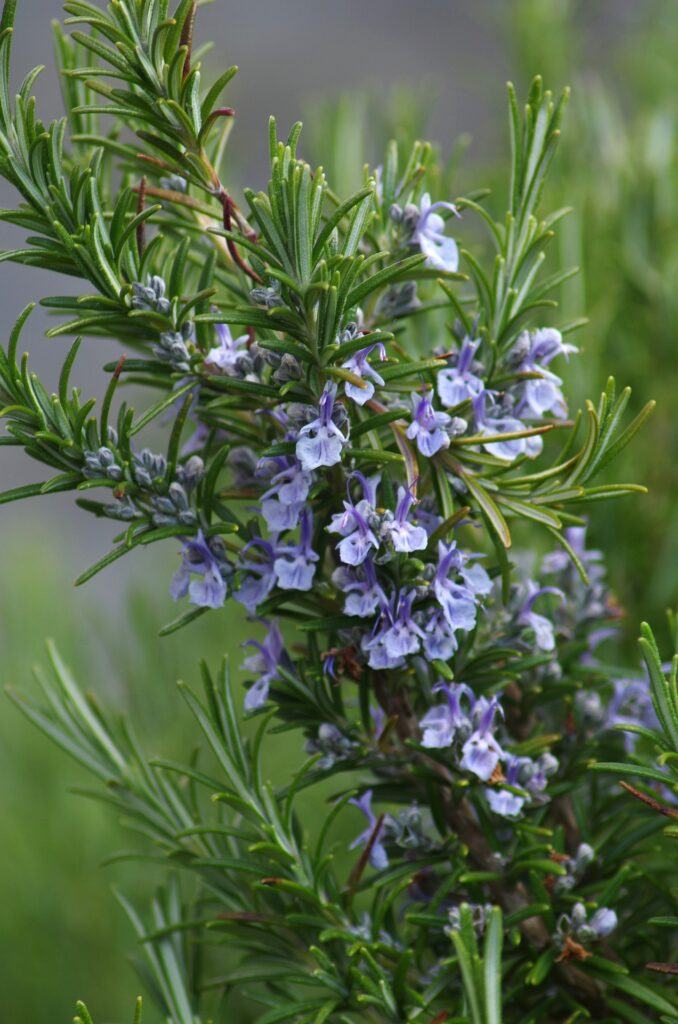
Similar to Thyme above, Rosemary is known as a Mediterranean woody herb that prefers drier conditions and poorer soils with good drainage.
It can be used in the early stages of cooking as it’s leaves are strong enough to withstand heat for a long time.
Delicious with lamb and a lovely evergreen plant with small pretty blue flowers that are attractive to pollinators.
It’s best to buy small plants rather than seed as Rosemary can be difficult to get started, but these are readily available in both supermarkets and nurseries.
Growing in pots is better early on but once established the young plants quickly grow and in fact can become quite large plants, even shrub size so are better permanently in the ground due to the need for more room.
Coriander/Cilantro
An absolute must for Asian and Eastern food (although some people have an aversion to it) with a wonderful citrus fresh flavour, Coriander/Cilantro can be eaten fresh (leaves and stalks) or dried (seeds).
It is very easy to grow from seed in spring and creates abundantly leafy plants high in Vitamin A and C.
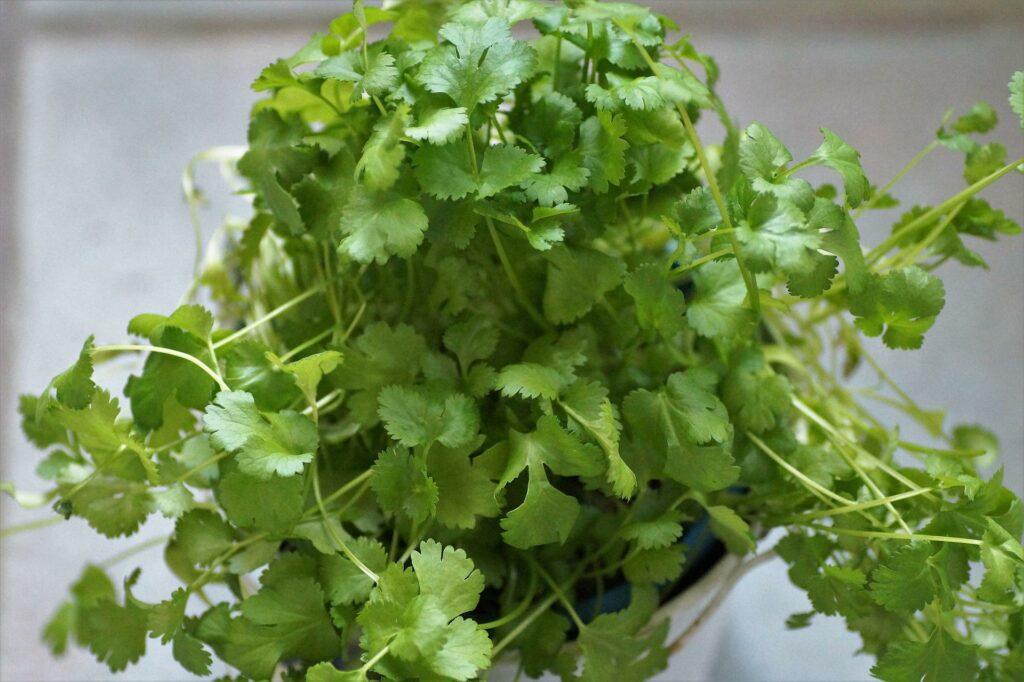
Do water regularly as if they dry out too much it can encourage the plants to bolt and flower, which takes energy from the leaves.
The pretty flowers are also edible however so it this happens you can snip the tops off and include them in your cooking.
Regular harvesting promotes more growth.
Oregano
Actually part of the Mint family and closely related to Marjoram, Oregano is another Mediterranean herb that will enjoy warm and sunny conditions with not too much watering.

Very tasty in tomato and pasta dishes, Oregano can be grown fairly easily from seed indoors in early spring, then planted out into pots or borders in summer.
After summer, you can cut the plant back and it will regrow, or you can let it flower for the bees.
Sage
With beautiful purple flowers and pale foliage, Sage is a very attractive plant to have in your borders.
There are many different varieties which can be annuals (dies after 1 year), biennials (dies after 2 years) or perennials (keeps going).
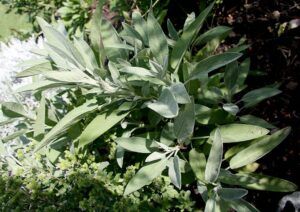
Sage loves the sun and good draining soil and is another herb that can handle minimal watering, so nice and easy to grow in containers as well as in the garden.
Lemongrass
It is always good to try something a bit different and exotic when growing your own herb garden, and the zingy fresh flavour of Lemongrass in Thai curries and dressings can liven up any dinnertime.
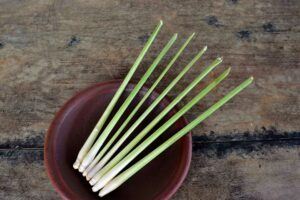
I have included Lemongrass as an easy herb to grow as you can actually propagate a new plant from a stalk of Lemongrass that you have bought from the store! Have a look at this video to see how:
It is a tropical herb however so will not tolerate frost or cold temperatures, so grow in containers in a sunny position and keep watered, and then bring in over the winter.
Conclusion
Herbs are a great addition to any garden, balcony or window ledge.
Both the soft leaf and woody varieties add incredible flavour to meals along with high levels of vitamins and nutrients beneficial to health and well-being.
Most are “cut and come again” which can offer a sustainable supply right through the year.
The herbs in this article are some of the easiest to maintain, with many of the Mediterranean kinds needing minimal watering, all perfect for children or beginner gardeners.
So next time you are in a supermarket, pick up a young plant instead of the packets of cut herbs.
Provided you know the conditions they like to grow in, these 10 herbs will keep growing and producing fresh and tasty produce for you, your family and friends.
